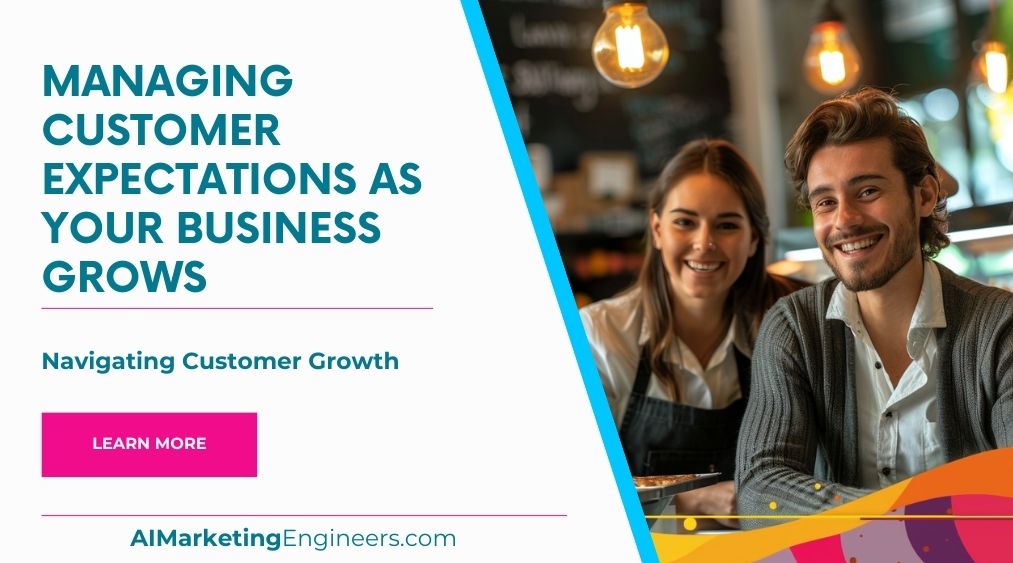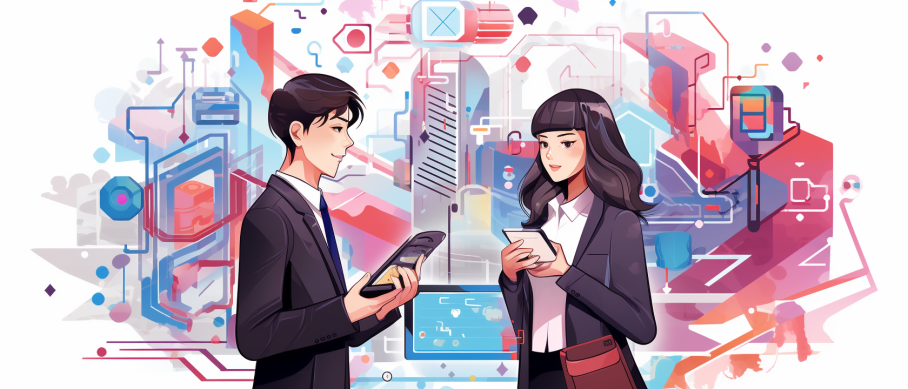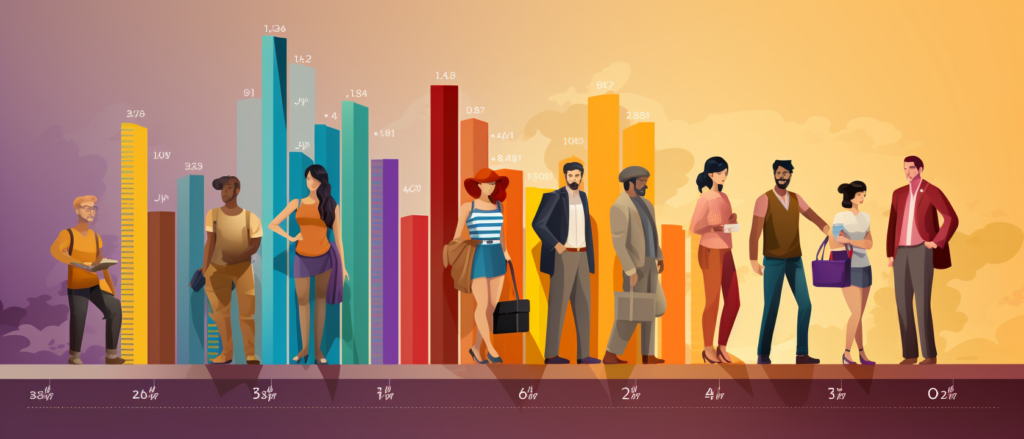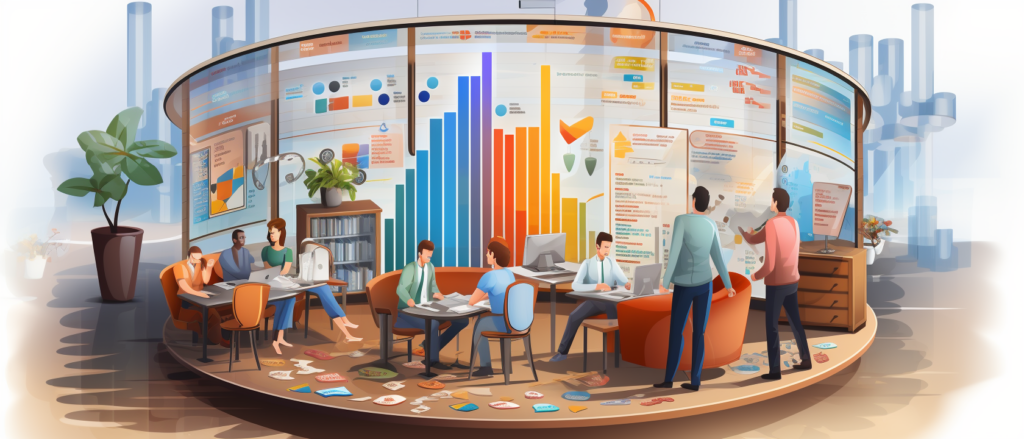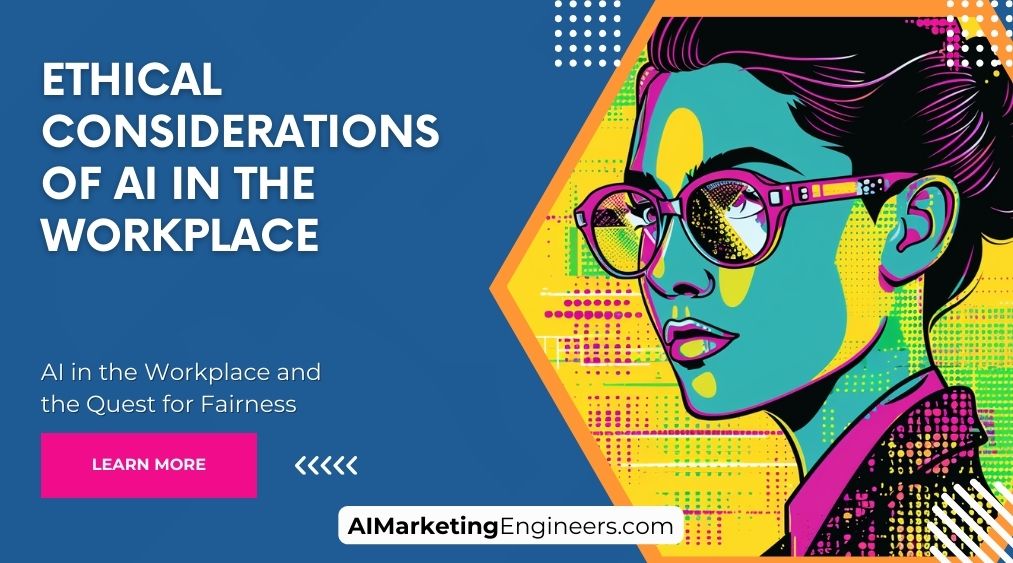Key Takeaways
✅ Set Realistic Expectations: Honesty is your best policy here. If you say you can deliver by tomorrow, ensure you can, or be upfront if you can't. It's all about building a foundation of trust with your customers and avoiding disappointments. Did you know 52% of consumers say that clear communication influences their loyalty? Keep them in the loop about what you can and can't do, and you'll not only meet but can exceed their expectations.
✅ Stay Agile and Adaptable: The marketplace changes fast, and what customers want today might be different tomorrow. Companies that tailor their services based on trending customer feedback see a 10-15% improvement in customer satisfaction. Position your business so it can pivot quickly, integrating new technologies and feedback systems that keep you in sync with customer desires. This way, you're always ready to serve them exactly what they want.
✅ Personalize and Engage: A whopping 80% of consumers are more likely to purchase from a company that offers personalized experiences. Dive into who your customers are, utilizing research and data analysis. Then, tailor your communications and offers to match their individual needs and preferences. Regular engagement on multiple channels strengthens relationships, making your customers feel valued and understood.
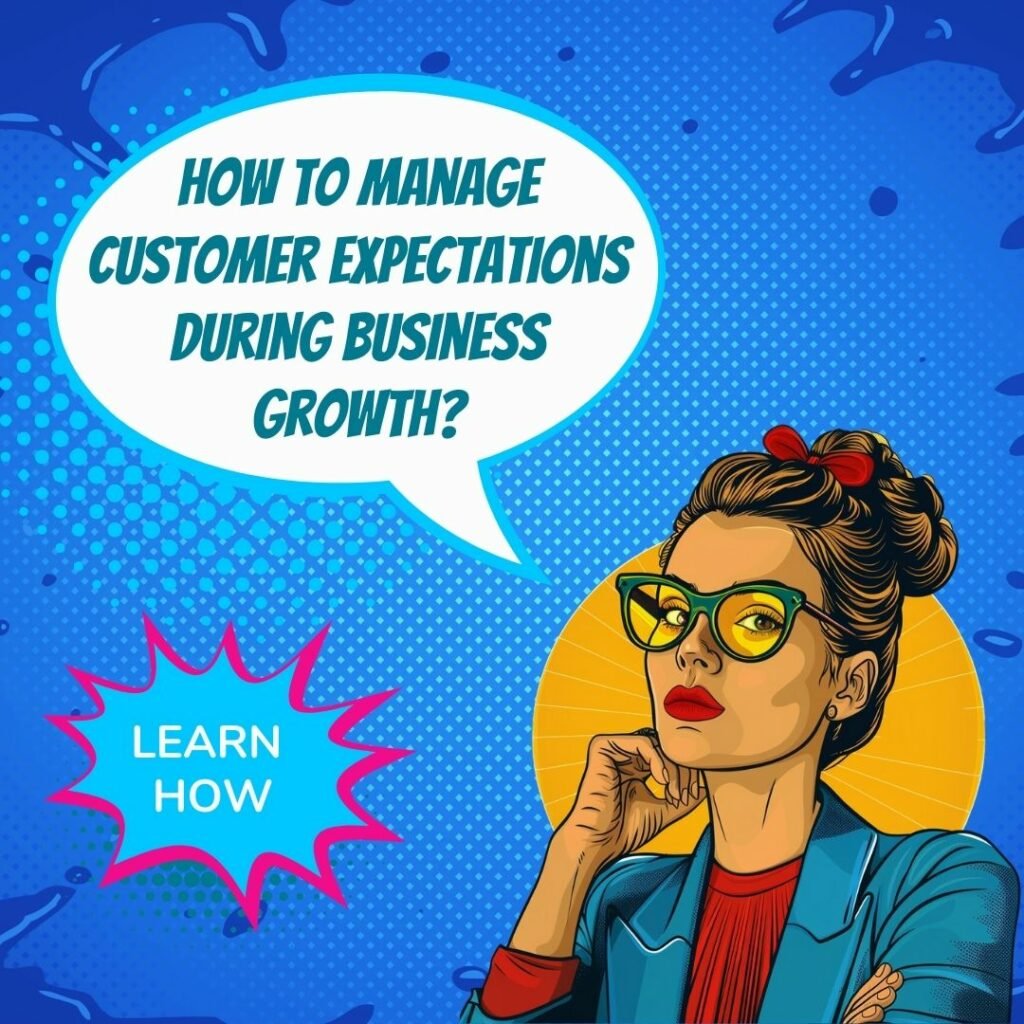 Introduction
Introduction
Have you ever wondered why some businesses seem to effortlessly grow customer loyalty, while others struggle to keep their customers coming back? The secret often lies in managing customer expectations effectively as a business expands. In today's fast-paced world, customers are bombarded with choices, and their expectations are higher than ever. But here's the thing: understanding and managing these expectations isn't just about keeping up; it's a powerful growth lever for your business.
From the significance of transparency in communication to the art of personalization, we're diving deep into the strategies that matter. With consumer expectations evolving rapidly, staying ahead requires more than just meeting the basics. It's about exceeding them, turning satisfied customers into loyal advocates for your brand. We'll explore innovative perspectives and modern trends that are reshaping the way businesses interact with their customers, offering you a roadmap to not only maximize satisfaction but your revenue potential as well.
Prepare to unlock actionable insights and groundbreaking information that will set your business apart in a crowded marketplace. Whether you're a start-up gearing for growth or an established brand looking to refine your customer engagement strategies, this article promises to be your guide to cultivating enduring customer relationships.
Top Statistics
| Statistic | Insight |
|---|---|
| 80% of customers view the experience provided by a company as equally important as its products and services. | This statistic underlines the vital role of customer experience (CX) in today’s market, making it as crucial as the quality of the products or services offered. |
| The customer experience management market is projected to grow at a CAGR of 15.4% from 2023 to 2030. | This impressive growth rate signals the increasing investments businesses are making towards enhancing customer experience, indicative of its paramount importance in securing a competitive edge. |
| 65% of customers expect companies to adapt to their changing needs and preferences. | Flexibility and adaptability are key in retaining customers, with a significant majority looking for businesses that evolve alongside their expectations. |
| 86% of respondents believe AI will have a transformative impact on customer experience. | The overwhelming consensus on AI’s potential highlights the urgency for businesses to integrate artificial intelligence in their CX strategies to meet modern customer expectations. |
| Customer-first B2C businesses witness nearly double the revenue growth of non-customer-first businesses. | Prioritizing customers not only fosters loyalty but also translates into tangible revenue growth, emphasizing the importance of a customer-centric approach in today’s business landscape. |
Importance of Managing Customer Expectations
In today's competitive market, the success of a business heavily relies on managing customer expectations. When expectations are not met, it can lead to negative reviews, customer complaints, and ultimately, a loss of business. On the other hand, effective expectation management can significantly reduce complaints, enhance customer experience, and foster a sense of loyalty that keeps customers coming back for more. It's a delicate balance that requires attention to detail, an understanding of customer needs, and an ongoing commitment to delivering on promises. This proactive approach not only improves customer satisfaction but also strengthens the business’s reputation.
Key Factors Shaping Customer Expectations
Several key factors shape how customers form their expectations. These include their past experiences with your business or others in the same industry, the way your business communicates through its website, social media, and marketing materials, and the reviews and recommendations they hear from others. These elements contribute to the customer's perception of what your business will deliver, influencing their level of satisfaction with your service or product. Additionally, the consistency of your brand message and customer service can significantly impact these expectations. Keeping a pulse on industry trends can also help anticipate and meet evolving customer needs.
Effective Communication of Solutions
It's crucial to offer realistic timelines and practical solutions right from the start. This involves making sure your customer support team is not just familiar with the solutions available but can also communicate these effectively to the customer. Providing clear and honest information helps manage expectations and builds trust with your customers. Regular updates during the service process further reassure customers that their needs are being addressed. Ensuring that all team members are aligned in their communication helps maintain consistency.
Understanding Your Customers
Taking the time to understand your customers—their needs, how they use your products, and what their past interactions with your company have looked like—can offer invaluable insights into managing their expectations. This deeper understanding allows you to tailor your services and communications to better meet their needs. Gathering customer feedback through surveys and direct interactions can provide a wealth of information. Utilizing this feedback to continuously improve your products and services ensures you stay relevant and responsive to customer demands.
Clear and Honest Communication
Accurate and up-to-date information provided in a straightforward and honest manner builds trust. Consistency in your messaging across various channels further reinforces this trust. Clear communication helps set realistic expectations and avoids misunderstandings that can lead to dissatisfaction. Transparency in addressing potential issues or delays also demonstrates your commitment to customer satisfaction. Regularly reviewing and refining your communication strategies can enhance clarity and effectiveness.
Frequent Customer Check-ins
Regular follow-ups through the resolution process can help manage and align expectations by keeping the customer informed about what to expect next. This proactive approach shows customers that you value their experience and are dedicated to resolving any issues. Scheduled check-ins also provide opportunities to gather feedback and address concerns promptly. Maintaining open lines of communication ensures that customers feel supported throughout their journey. Implementing a structured follow-up process can streamline this effort and ensure consistency.
Building Customer Loyalty
Meeting and even exceeding customer expectations on a consistent basis cultivates loyalty. Inviting feedback and suggestions for improvement can also go a long way in enhancing customer service. Loyal customers are more likely to advocate for your brand and provide valuable referrals. Recognizing and rewarding loyal customers can further strengthen these relationships. Implementing a robust loyalty program can provide additional incentives for continued engagement.
Implementing Effective Expectation Management
To implement these strategies effectively, businesses must train their customer support teams in the art of communication and setting realistic expectations. Regular monitoring of customer expectations throughout the customer journey and adapting to their changing needs based on feedback is also crucial for success. Investing in ongoing training ensures that your team remains equipped to handle evolving customer demands. Utilizing technology to track and analyze customer interactions can provide insights for continuous improvement. This comprehensive approach ensures a positive and consistent customer experience.
AI Marketing Engineers Recommendation
Recommendation 1: Utilize Customer Feedback Loops for Continuous Improvement: Actively seek and analyze customer feedback through surveys, social media, and direct communication. Use this data to identify patterns or common issues that may affect customer satisfaction. Businesses that implement changes based on customer feedback tend to see a 10-15% increase in customer satisfaction scores, according to a recent study. This approach ensures you are constantly adapting and meeting your customer's evolving needs as you grow.
Recommendation 2: Leverage Personalization Across All Customer Interactions: Personalization isn't just a trend; it's what customers expect. Utilizing customer data to tailor experiences can significantly enhance satisfaction. For instance, businesses using advanced analytics to personalize recommendations have seen up to a 25% revenue uplift. Tools like CRM software and AI-driven analytics platforms can help segment your audience and deliver more personalized content, offers, and support, making customers feel valued and understood.
Recommendation 3: Invest in Omnichannel Support to Ensure Accessibility: Customers today expect to reach out and receive support through various channels, whether it's through social media, email, live chat, or phone calls. By providing an omnichannel support experience, you ensure that customers can get help in the way that's most convenient for them, thereby increasing satisfaction. Companies that adopt an omnichannel strategy achieve 91% greater year-over-year customer retention rates compared to businesses that don't, according to a study by Aberdeen Group. Utilizing tools that integrate these channels can help you manage communications more effectively and maintain high-quality support as your customer base grows.
Conclusion
In wrapping up, managing customer expectations isn't just a best practice—it's a fundamental element for the prosperity of any growing business. Recognizing the importance of this endeavor means understanding that how your customers perceive and experience your service directly influences their satisfaction and loyalty. The journey from a negative review to a loss of business can be short, whereas establishing effective expectation management can lead to a path where complaints diminish, and genuine customer satisfaction shines.
The landscape of customer expectations is constantly shaped by prior experiences, communications across varied channels, and the influential power of reviews and word-of-mouth. It's within this landscape that the five strategic pillars we discussed—opening dialogues about solutions, truly knowing your customer, clear and honest communication, frequent check-ins, and cultivating loyalty—offer a map for navigation.
Implementing these strategies requires commitment. Training teams, monitoring customer engagement, and welcoming feedback are all part of an ongoing process to adapt and meet shifting expectations. But, the pay-off is clear: increased customer retention, loyalty, and a solid business reputation that stands the test of time.
As your business grows, so will the challenges in keeping everyone happy. But, armed with the right approach to managing customer expectations, those challenges become stepping stones to deeper customer relationships and, ultimately, a more successful business. The question now is, how will you adapt these insights to keep your customers not just satisfied, but delighted, as you move forward?
FAQs
Question 1: What are customer expectations?
Answer: Think of customer expectations as what your customers believe should happen when they buy your product or use your service. It's all about what they think is going to happen, based on what they’ve seen, heard, or experienced before.
Question 2: Why are customer expectations important?
Answer: Getting into your customers' good books is key. If you meet or beat their expectations, they’re more likely to sing your praises to others and keep coming back. Miss the mark, and you might find yourself on the wrong side of a tweet or losing them to a competitor.
Question 3: How do customer expectations change over time?
Answer: Just like fashion trends, customer expectations shift with the wind, influenced by new tech, the next big thing in social media, or just because people start wanting something different. Keeping an ear to the ground helps you stay in step with what your customers are looking for.
Question 4: How do industry dynamics influence customer expectations?
Answer: Depending on whether you’re selling fizzy drinks or software, your customers might be expecting something entirely different from you. Each industry has its own benchmark, and it’s all about knowing where the bar is set in yours.
Question 5: What role does technology play in shaping customer expectations?
Answer: Technology is a game-changer. It’s like how smartphones turned us all into photographers. With advancements in online shopping, social media, and all things digital, customers now expect things faster, easier, and a bit more personalized than they did before.
Question 6: How do economic conditions impact customer expectations?
Answer: When the economy's up, people might expect more because they feel more flush. When it's down, their expectations might simmer down too. Understanding these swings can help you tailor your approach to meet them where they are.
Question 7: How can businesses set realistic customer expectations?
Answer: Honesty is the best policy. Make sure you’re clear and upfront about what your customers are getting, without any fluff. This way, no one’s expecting a champagne experience on a beer budget.
Question 8: What are key customer-facing considerations for businesses?
Answer: Think about the things that directly touch your customer's experience – like how you handle questions, how quickly you can deliver, keeping things in stock, and making returns easy. These are non-negotiable if you want to keep your customers happy.
Question 9: How can businesses use marketing to manage customer expectations?
Answer: Use your marketing to paint a picture of what your customers can realistically expect. Share stories from satisfied customers, be clear about what’s on offer, and whatever you do, don’t promise what you can’t deliver.
